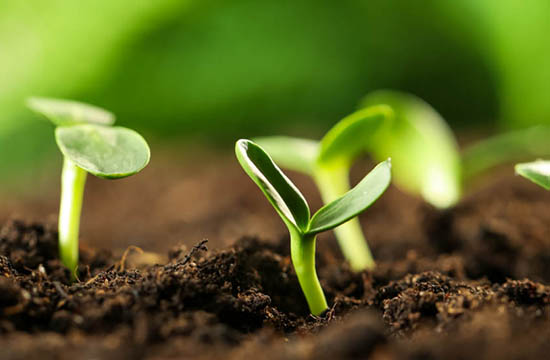The Science Behind Fertilizing Fruit Trees
For fruit tree cultivation, achieving maximum yields of high-quality fruit depends on precise nutrient management. While visual cues can indicate nutrient deficiencies, proactive strategies that prioritize nutrient efficiency are essential for optimal orchard performance.
Recognizing Nutrient Deficiency in Fruit Trees
While these visual signs of nutrient deficiencies in fruit trees are helpful, relying solely on them for nutrient management can be reactive and lead to suboptimal yields.
- Stunted growth or weak branches: May indicate deficiencies in nitrogen, phosphorus, or potassium.
- Pale or yellowing leaves: Often a sign of nitrogen or iron deficiency.
- Smaller or misshapen fruit: Could point to potassium, boron, or zinc deficiencies.
- Reduced fruit production: May be caused by various nutrient imbalances.
Proactive Nutrient Management for Fruit Trees
To truly optimize fruit tree nutrition, consider these factors:
- Soil Testing: Conduct regular soil tests around the fruit tree to assess nutrient levels and tailor fertilization programs accordingly.
- Growth Stage: Different growth stages have varying nutrient demands. Adjust fertilization timing and composition to match these needs.
- Environmental Conditions: Factors like temperature, rainfall, and soil type influence nutrient availability and uptake in fruit trees.
- Foliar Analysis: Analyze leaf tissue to confirm nutrient deficiencies and monitor the effectiveness of fertilization programs.
By integrating these strategies, you can ensure that your fruit trees receive the right nutrients at the right time, maximizing both yield and quality.
Benefits of Optimized Fertilization for Fruit Trees
- Enhanced Fruit Size and Quality: Proper nutrient balance leads to larger, more uniform fruit with improved color, flavor, and shelf life.
- Increased Yield: Efficient nutrient utilization promotes robust growth and maximizes fruit production.
- Improved Fruit Tree Health and Vigor: Balanced nutrition strengthens trees, increasing their resistance to pests and diseases.
- Reduced Environmental Impact: Precision fertilization minimizes nutrient runoff and promotes sustainable orchard management.
Understanding Fruit Tree Fertilization
The Role of Fertilizers in Fruit Tree Health
Fruit trees need a balanced diet to thrive and fertilizers supplement essential nutrients that fruit trees can’t obtain in sufficient quantities from the soil alone.
Fertilizers come labeled with a three-number code, like 10-10-10, which states the ratio of the three primary nutrients needed to grow, combat disease, and produce fruit: Nitrogen (N), Phosphorus (O) and Potassium (K).
- Nitrogen (N): The building block of healthy leaves and stems, promoting strong vegetative fruit tree growth.
- Phosphorus (P): Crucial for root development, flower and fruit production, and overall tree health.
- Potassium (K): Strengthens plant cell walls, improves resistance to disease, and enhances fruit quality.
Signs of Nutrient Deficiencies in Fruit Trees
When these essential nutrients are in short supply, fruit trees communicate in fairly obvious ways what they need from their fertilizer. Watch out for:
- Nitrogen deficiency: Stunted growth, weak branches, pale or yellowing leaves (chlorosis)
- Phosphorus deficiency: Purplish or reddish leaves, stunted growth, poor fruit set
- Potassium deficiency: Scorching or yellowing of leaf edges, weak stems, reduced fruit size and quality
When to Fertilize Fruit Trees
Ideal Fertilization Periods
Spring is generally considered the ideal time to fertilize fruit trees. As the trees begin to exit from dormancy and enter their active growth phase, they require a boost of nutrients to support healthy development and abundant fruit production.
Factors Affecting Fruit Tree Fertilization Timing
While spring is a general rule, other factors (like climate and soil type) can influence the prime time to fertilize depending on their environment:
- Climate: Trees in colder climates might benefit from fertilization a bit later, allowing the soil to warm up before nutrients are released. The warmer the climate, the earlier they need to be fertilized.
- Soil Type: Sandy soils, which tend to drain quickly, may require more frequent fertilization while clay soils might hold onto nutrients longer.
- Tree Species: Different fruit tree species have varying nutrient requirements and growth patterns (apple trees might benefit from fertilization earlier in the spring compared to peach trees).
Growth, Bearing Status and Fertilization for Fruit Trees
Your tree’s growth and bearing status can also act as a rough guide to your future fertilization decisions:
- Vigorously Growing Trees: Young, rapidly growing trees may demand more frequent and heavier fertilization to support their development.
- Bearing Trees: Fruit-bearing trees need additional nutrients to produce a bountiful harvest. You could start fertilizing after fruit is set to replenish nutrients that were depleted during the fruiting process.
- Weak or Stressed Trees: Trees that appear weak or stressed may benefit from a targeted fertilization program to help them recover.
Fertilization Techniques and Best Practices
Wondering how to fertilize fruit trees without harming them or the environment? Follow these best practices to give your fruit trees the nutrients they need without disrupting the natural ecosystem.
1. Test Your Soil First
Before applying your fertilizer, get a clear picture of your existing nutrient profile. Test your soil to track levels of NPK (nitrogen, phosphorus, and potassium) present, along with other essential elements that may be working against you. Customize your ratios to reflect these deficiencies and avoid over-application.
2. Apply Fertilizer to Fruit Tree with Proper Methods
Did you know that spreading fertilizer across the entire area is less efficient and can lead to nutrient waste? The most effective way to fertilize fruit trees is by applying fertilizer around the drip line – the outermost circle of the tree’s canopy where water drips from the leaves. Nutrients can now reach the tree’s root zone for the best level of absorption.
3. Balance Nitrogen Levels
Yes nitrogen is needed for healthy growth, but too much can lead to excessive leafy growth at the expense of fruit production. To encourage proper fruit development, you should use slow-release fertilizers or incorporate organic matter like compost, which releases nitrogen gradually.
How to Choose the Right Fertilizer for Your Fruit Tree
Understanding Fertilizer Formulas
It’s helpful that fertilizers come labeled with a three-number code representing the ratio of Nitrogen (N), Phosphorus (P), and Potassium (K). Knowing the ideal N-P-K ratio for your fruit trees can depend on certain criteria, including:
- Tree Age: Young trees typically require more nitrogen for healthy growth, while mature fruiting trees benefit more from balanced or potassium-dominant fertilizers.
- Fruit Type: Different fruit trees might have varying nutrient requirements (citrus trees generally need more potassium than nitrogen). Granulated fertilizers that are rich in nitrogen offer a controlled and gradual distribution of vital nutrients.
- Soil Conditions: A soil test is a good snapshot of your soil’s existing nutrient levels, helping you choose a fertilizer that addresses deficiencies without overdoing it.
Organic vs. Synthetic Fertilizers for Fruit Trees
Not sure if organic or synthetic fertilizer would deliver the best results for your fruit trees? Here’s a side by side comparison to get you started:
- Organic Fertilizers: Derived from natural ingredients like animal manure, compost, and plant meals. They release nutrients slowly over time, improving soil health and promoting beneficial microbial activity. However, they may not provide a quick boost of nutrients when needed.
- Synthetic Fertilizers: Provide readily available nutrients in concentrated forms. They can be effective for correcting specific nutrient deficiencies but may not contribute to long-term soil health if used excessively.
Our Product Recommendations for Your Fruit Trees
Whether your fruit trees need a noticeable boost in nitrogen or could benefit from more phosphorus, we have nutrient support down to a science at Verdesian Life Sciences®. Our focus is on maximizing nutrient uptake and optimizing plant health, allowing fruit trees to thrive and maximize applied NPK-balanced fertilizers.
ReKovery is a revolutionary potassium acetate fertilizer designed to elevate crop production by providing a readily available source of potassium. Its unique formulation offers several key advantages for achieving optimal performance for your fruit trees:
- Enhanced Nutrient Uptake and Utilization: ReKovery’s water-soluble, low-salt, and neutral pH formulation ensures rapid uptake and efficient utilization of potassium by crops. This leads to improved growth, yield, and overall productivity.
- Superior Crop Quality: Adequate potassium levels are essential for producing high-quality crops. ReKovery promotes desirable size, shape, color, and enhances shelf life and taste, maximizing market value.
- Versatile Application Methods: ReKovery’s low-salt composition makes it safe for various application methods, including foliar sprays and in-furrow applications, providing flexibility in nutrient delivery.
- Stress Tolerance and Resilience: Potassium plays a crucial role in plant stress response. ReKovery strengthens plants’ ability to withstand environmental challenges, ensuring consistent yields even under adverse conditions.
- Environmentally Friendly: ReKovery is a chlorine-free potassium source, promoting soil health and minimizing environmental impact.
Advanced Fertilization Strategies for Fruit Trees
Why Less is More in Late Summer with Fertilization
While spring and early summer are prime fertilization periods, we recommend putting a pause or significantly reducing fertilization after July. As fruit trees prepare for dormancy, they slow down their nutrient uptake. Excessive fertilization during this time can lead to unnecessary nutrient buildup in the soil, potentially causing imbalances or even harm to the trees.
Is Annual Fertilization Necessary?
Not all fruit trees need to be fertilized every year. Factors such as soil fertility, tree age, and previous year’s growth can influence the need for additional nutrients.
- Soil Testing: Reveal the nutrient levels in your soil with testing; if it’s already rich in essential elements, you might be able to reduce or eliminate annual fertilization.
- Tree Health and Growth: Healthy trees with strong growth and good fruit production may not need as much fertilization.
- Previous Year’s Performance: If your trees produced well last year, they might have depleted their nutrient reserves. Apply a modest level of fertilizer to sufficiently replenish those stores.
Remember: Fertilization is just one piece of the puzzle. Regular pruning, pest control, and proper watering are also essential for maintaining healthy fruit trees.
Keep Organic Matter and Trace Minerals in Mind
While fertilizers provide essential nutrients, keeping your soil healthy is just as important. Organic matter (like compost or well-rotted manure) plays a crucial role in improving soil structure, water retention, and nutrient availability. It also promotes beneficial microbial activity, which can enhance nutrient uptake.
Trace minerals like zinc, iron, and manganese, although in small quantities, are also essential for fruit tree health. While they are often present in sufficient quantities in most soils, deficiencies can happen so conduct a proactive soil test to assess trace mineral levels and take corrective measures if necessary.
Fruit Tree Fertilization FAQs
What is the best month to fertilize fruit trees?
Spring is generally the best time to fertilize fruit trees. This is when they are actively growing and can efficiently absorb nutrients. However, the exact timing can vary depending on your local climate and specific tree species.
What is the best fertilizer for fruit trees?
A balanced fertilizer with a ratio of N-P-K (Nitrogen, Phosphorus, Potassium) is often recommended for fruit trees. The specific ratio can vary depending on the age of the tree and its nutritional needs. Test your soil to determine the exact nutrient deficiencies to accommodate.
When should you not fertilize the tree?
Avoid fertilizing fruit trees after July, as trees typically start to slow down their growth and prepare for dormancy. Excessive fertilization during this time can lead to nutrient buildup and potential imbalances.
Where do you put fertilizer on fruit trees?
Apply fertilizer around the drip line of the tree, which is the outer edge of the canopy where water drips from the leaves. This ensures the nutrients reach the root zone for optimal absorption.
How often should I fertilize my fruit trees?
As a general rule, most fruit trees benefit from annual fertilization during the spring. However, soil fertility testing plus factoring in the age and growth rate of your trees can help you determine the optimal fertilization schedule.
Final Thoughts on Fertilizing Fruit Trees
Understanding the nutrient needs of your fruit trees is the key to peak health and productivity. By providing them with the right balance of nutrients at the appropriate times, you can directly improve tree growth, fruit quality, and overall yield in noticeable ways. Use this guide as a resource and give your fruit trees the care they deserve.
Optimize Your Orchard with Verdesian
At Verdesian, we use the latest in agricultural science to enhance the health of crops. Our products are used in numerous crops to maximize yield, improve crop quality, increase nutrient availability, and much more. Contact us today for more information!


